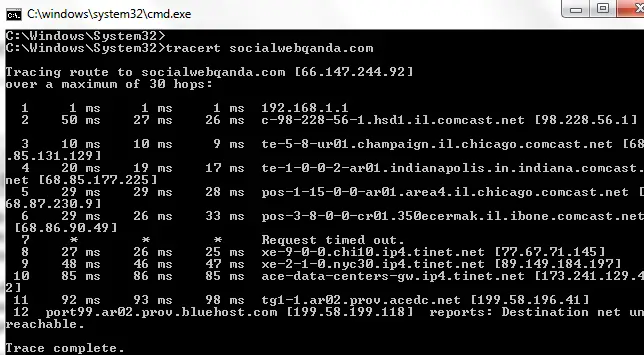

Martin Brandenburg Asks: Reference request for "Tangent relation" for functions between metric spaces
#Network connections unreplied how to#
May someone give me some insight of this and maybe how to solve it? But that's more intuition than a proper explanation. The two main hypothesis I have are that: 1) the pattern is coming already from the laser aperture and 2) I can see it closer because I'm focusing the beam at the first parabola, making all the wavefronts of the finitecross section beam interfere. I'm using a visible light red pilot to align, so the distance should be quite far, or that's what I would expect. I don't need to be necessarily far from the laser output to see the diffraction pattern, even though it gets clearer as I go away (of course because I'm getting into the far field).

This is a bit annoying because it makes it difficult to measure the size of the output beam to check if I'm actually collimating or if I'm off. The problem I have is that I can see an Airy Disk pattern after the collimator, even though I am not using any apertures (further than the laser output itself). That way, the incoming collimated beam coming to the big mirror gets focused and then collimated again by a smaller parabola, thus reducing the beam size. I use two aligned off-axis parabolic mirrors with different size whose focuses coincide. I am trying to build a beam reducer using reflective optics. QuantumCorral Asks: Can an Airy Disk appear when using reflective optics? So unitarity is violated, which is worrying since QFT on curved spacetime is essentially just a quantum system with time-dependent Hamiltonian. But now, the clever gravitational path integral resolution is not available to us, since there's no gravity: the background is fixed. Again, this presents a paradox once the black hole is too small to purify the external state. Now we solve the Heisenberg equations of motion, and just as before we find that the late-time state is thermal. Sure, it's not physical, but this is just a thought experiment anyway. There's no reason we can't just choose an arbitrary spacetime by hand. I don't care whether it solves Einstein's equations or not: right now, we're just doing QFT on a fixed curved spacetime. That is, suppose we fix a background geometry corresponding to a slowly shrinking black hole. The whole argument was done using the gravitational path integral, albeit only in a saddle-point approximation.īut isn't there an information paradox even when gravity is turned off? In this resolution, it was crucial that gravity was turned on. This at least partially resolves Hawking's information paradox. In the well-known recent Page curve calculations, the saddle-point approximation of the gravitational path integral was shown to give a pure exterior state at late times, as expected, provided the correct saddle is chosen. Step 1 is known to be dubious: small corrections to Hawking's calculation are enough to destroy the conclusion that the exterior state is thermal at late times. Therefore the late-time state of the exterior is thermal, violating unitarity. Once the black hole is small enough, the dimension of its Hilbert space is too small to purify the state of the exterior. In the semiclassical approximation, since Hawking radiation carries away energy, the black hole gets smaller over time. Then the paradox is as follows:īy solving the Heisenberg equations of motion (as Hawking did), we find that the late-time state of the exterior of the black hole is thermal. The standard setting for the black hole information paradox is semiclassical gravity, where quantum fields backreact on the metric via the expectation value of their stress-energy tensor. Nodumbquestions Asks: Is there an information paradox even without gravity?


 0 kommentar(er)
0 kommentar(er)
